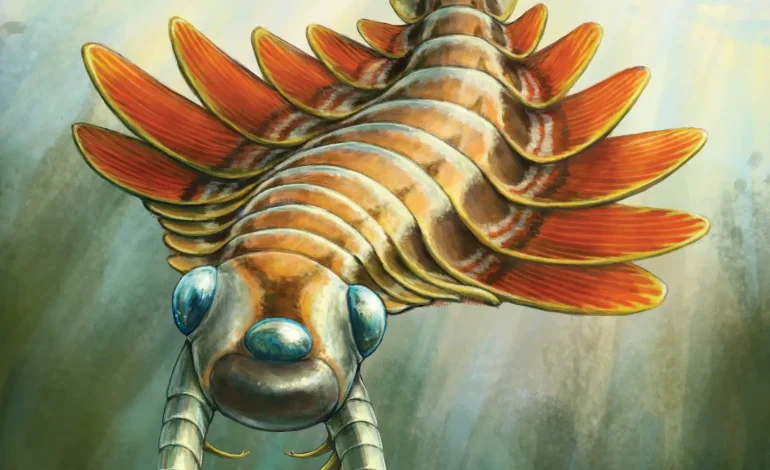Ancient Sea Predator Reveals Evolutionary Links Despite Unusual Appearance

A newly analyzed fossil from over 500 million years ago is offering fresh insight into the evolution of early marine life—especially arthropods—despite its initially alien appearance, the New York Times reports.
The creature, Mosura fentoni, once roamed the oceans during the Cambrian Period and is now drawing attention not just for its three eyes, but for a complex body structure that shows surprising similarities to modern animals.
Discovered in Canada’s Burgess Shale fossil beds, Mosura fentoni was a small, active predator measuring about 2.5 inches long. Though it possessed some bizarre features—including grasping claws, a circular mouth filled with teeth, and a trio of eyes—new research indicates its internal anatomy was unexpectedly advanced.
The study, published in Royal Society Open Science, involved detailed analysis of around 60 well-preserved specimens collected over more than a century, including a major trove found in 2012 at Marble Canyon. Led by paleontologist Joseph Moysiuk and his advisor Jean-Bernard Caron of the Royal Ontario Museum, the team used polarized light imaging to examine internal structures such as digestive and circulatory systems, and even traces of nerve tissue.
One of the most significant findings was the high degree of segmentation in Mosura’s body. With up to 26 segments, including a trunk lined with gill-bearing appendages, the creature challenges earlier assumptions that early arthropods had simpler, undifferentiated bodies. This feature aligns Mosura more closely with modern arthropods such as crustaceans and insects, which also show specialized body parts adapted for various functions.
“It’s something that we’ve never seen in this group of animals before,” said Moysiuk. “Not just in terms of the number of segments, but also in how they’re differentiated.”
These anatomical details suggest that Mosura may have had more advanced respiratory capabilities than previously thought—an advantage for a mobile predator navigating Cambrian seas, where it may have needed to evade larger creatures like Anomalocaris and Titanokorys.
Although related to radiodonts, a group of ancient arthropod ancestors, Mosura‘s distinct features prompted researchers to classify it into a new group altogether. The animal’s nickname, “sea moth,” came from flaps along its sides used for swimming. These flaps, combined with its compact, wing-like profile, inspired its formal name—a nod to Mothra, a creature from Japanese pop culture.
The study also observed dark patches in Mosura’s fossilized remains, which may represent internal cavities used to circulate blood. However, not all experts agree on this interpretation. Joanna Wolfe, a Harvard paleontologist not involved in the research, suggested that these marks could instead be remnants of digestive glands.
While certain aspects of Mosura’s biology remain open to debate, the researchers believe its segmented trunk provides compelling evidence of its evolutionary ties to modern arthropods.
“It’s a very strange animal indeed,” said Caron, “but maybe not necessarily as strange as it initially looks.”









The latest news in your social feeds
Subscribe to our social media platforms to stay tuned